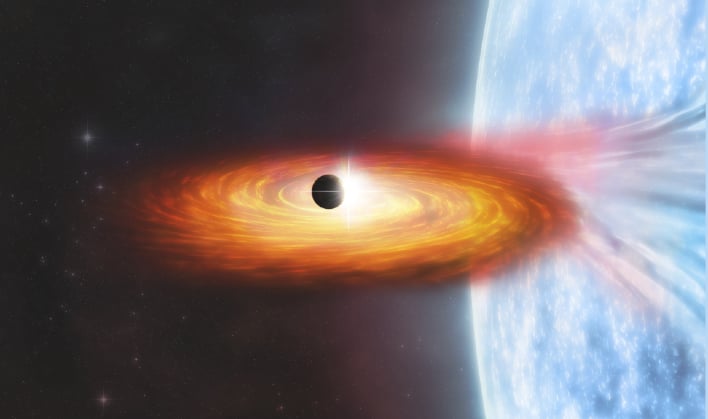NASA Chandra X-Ray Observatory May Have Discovered A New Huge Planet

NASA has recently been crunching new data coming in from its probe Juno currently orbiting Jupiter. The data is giving researchers a much better idea of Jupiter's atmosphere and its famous Great Red Spot. Now it seems they will have even more data to investigate with the possible discovery of an exoplanet in the spiral galaxy Messier 51 (M51), also known as the Whirlpool Galaxy due to its distinctive look.
An exoplanet is a planet that is outside our own Solar System. Up until this point, astronomers had only found exoplanets and possible exoplanets within the Milky Way galaxy. Each of those have all been within 3,000 light-years of Earth. This new candidate is an estimated 28 million light-years away from us, placing it 3,000 times farther away than those discovered in the Milky Way.
The way astronomers are detecting possible new exoplanets is through x-ray wavelengths using Chandra. The result is based on transits, or when a planet passes in front of a star and blocks some of the stars light. This results in a characteristic dip that astronomers can key in on. This is being done through both ground-based and space-based telescopes. An example of the prior method is NASA's Kepler and TESS missions which have searched for those dips in optical light.
Rosanne Di Stefano of the Center for Astrophysics, says about this method of searching for exoplanets, "We are trying to open up a whole new arena for finding other worlds by searching for planet candidates at X-ray wavelengths, a strategy that makes it possible to discover them in other galaxies."
The luminous systems astronomers have been searching typically contain a neuron star or black hole pulling in gas from a closely orbiting companion star. This causes the neuron star or black hole to become superheated and glow in x-rays. A planet passing in front of this bright spot could block most or all of it. This makes it much easier to spot at greater distances than current optical light transit studies.
While all of this incredible, it will need more data to verify and determine that the new find is in fact an exoplanet. Perhaps the greatest challenge in procuring more data is that because of its large orbit it will not pass in front of its binary partner for about another 70 years. This puts the idea of confirming its status as an actual planet out decades.
Co-author of the study being done, Nia Imara of the University of California at Santa Cruz, explains it this way, "Unfortunately to confirm that we're seeing a planet we would likely have to wait decades to see another transit. And because of the uncertainties about how long it takes to orbit, we wouldn't know exactly when to look."
The group of researchers looked in three galaxies beyond the Milky Way, using both Chandra and the European Space Agency's XMM-Newton. Their search consisted of 55 systems in M51, along with 64 systems in Messier 101, or the Pinwheel galaxy, and 119 systems in Messier 104 also known as the Sombrero galaxy.
Julia Berndtsson of Princeton University and co-author said, "We know we are making an exciting and bold claim so we expect that other astronomers will look at it very carefully. We think we have a strong argument, and the process is how science works."
As more research is done and other astronomers review the data, perhaps more will be revealed about this possible new exoplanet. Until then we will continue to wonder if we are truly alone or if there is life beyond what we currently know.


